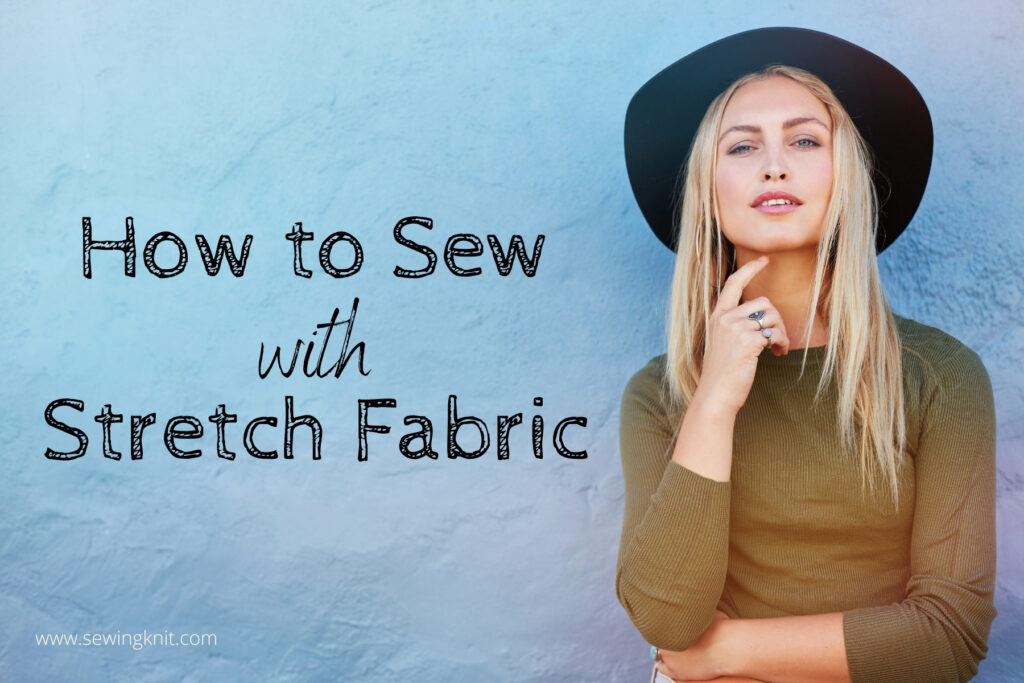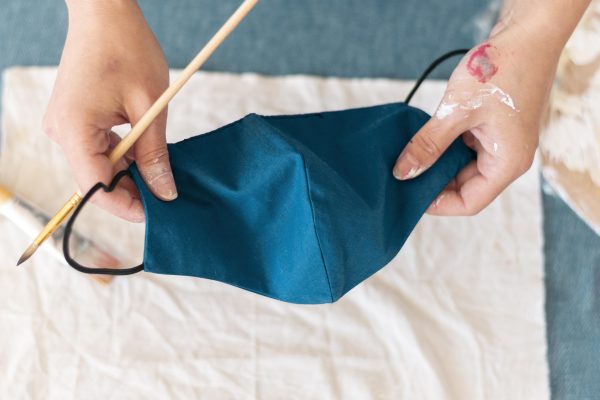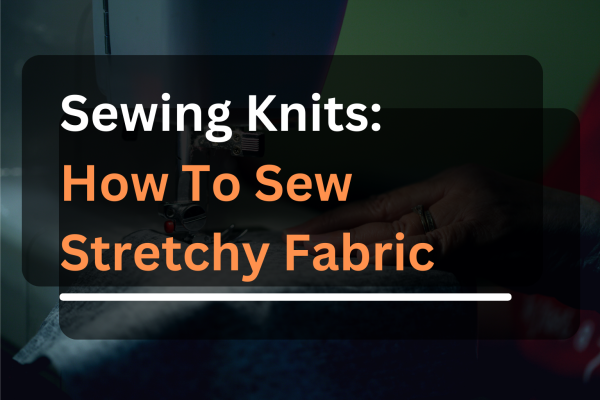
Stretch textiles emerged from a technological attempt to create neoprene-based fibers. Stretch materials make garment fabrication easier.
Stretch materials make garment fabrication easier. Fashion houses started implementing them in swimwear and female’s undergarments as earlier as the 1980s. They were popular in the early 1990s and are frequently utilized in athletic wear.
The material have also been used for a variety of creative and ornamental applications on a broader scale. Stretch fabric structures produce modern-looking design components that have a wide range of applications in professional stage and entertainment development.
What is a Stretch Fabric?
Stretch fabric is a common word for any material, which has a higher recovery and elasticity than usually assumed, stitched, or weaved. These can be twisted materials, single knitted, dual knitwear, and sometimes even partial-cut fabrics.
Most textiles are stretched knits. A major portion of this category comprises jersey textiles.
Its 4-way stretch is the most important property of these textiles. This indicates they are diagonally and longitudinally stretched. Some stretch textiles — generally thicker – have a 2-way stretch. It is also important to ensure that your process of sewing corresponds with the correct stretch fabric.
Types of Stretch Fabric
Primarily two kinds of stretch fabrics are available. The 2 way and the 4-way method. While the 2 way is commonly called a 1 stretch material.
The 4-way stretch materials can stretch in only two ways, regardless of what their name suggests.
The 2-way extending materials only extend longitudinally or diagonally. Whereas the 4-way option extends on both sides.
Several argue that there is a third category, the one-way stretching material. Although that name applies to a lot of knitted fabrics. These materials cover up to 25%. The four-way stretch also extends to many jersey garments as they are stitched and not tiled.
Working with stretch fabric can sometimes prove to be challenging. Some types of stretch fabric are knit spandex, fleece, jersey, and many more.
Understanding the Properties of Stretch Materials
- Jersey, knit, and stretchy materials are all words that are used to describe comparable textiles.
- Knits make up the majority of stretch textiles, with jerseys accounting for a sizable portion of this category.
- Linen, silk, polyester, wool, bamboo, and a variety of other elements are used to manufacture those textiles.
How to Sew Stretch Fabric with a Machine
Types of Needle Used
Select the correct needle type. The unique needle should be stitched on every stretched knit fabric, either with a ballpoint or with a stretching needle.
There is a flattened end on a ballpoint needle, which is when the thread is sewn off. It prevents the ripping and shearing of the woven fabrics. Use a ballpoint needle for loose woven knits.
A stretching needle will give you the greatest results if you are dealing with a lightweight, tight-woven fabric like Lycra, a stretched silk jersey, or lightweight fake suede. This kind of needle helps prevent skipping stitches on sensitive stretching materials.
Types of Thread Used
You presumably use all-purpose polyester thread currently, and if it is, continue! When sewing thread, switch it out to polyester if you have cotton thread, which many quilters adore.
The polyester thread does have a small stretch, when you expand the shirt, it will be more durable. There’s no stretch of cotton strands at all. The cotton thread also tends to break when pulled.
Sewing Machine Settings for Stretchy Fabric
- Use stitches that will hold the fabric’s stretch. To avoid puckering and breaking, the stitches must stretch with the cloth. If you’re using a straight stitch, draw the cloth taut rather than pulling it.
- Based on the type of your sewing machine, you may choose from a broad range of stretch stitches. The following are the finest stitches to be used when sewing stretch fabrics:
- Thin zigzag: use a zigzag setting that is very thin, with the stitch length equivalent to the stitch width.
- Overedge stitch: a specialty stitch that binds and ends a seam in one pass by locking over the fabric’s border.
- Straight stretch stitch: Three parallel rows of straight stitches make up the straight stretch stitch.
- Twin-needle stitch: The twin-needle stitch necessitates the use of two needles. Two parallel rows of stitching go across the right side of the cloth.
- Attempt using a different presser foot. While stitching, the dual feed foot or walking foot extension for your sewing machine can assist prevent one layer of material from wearing out. Review your device’s guidebook to discover which one is suitable.
- To stitch zigzag hems, use a double needle. Recommend buying a double-needle that can be used with your device’s zigzag stitch option. This will give a professional-looking hem finish.
- This needle will make a secure and good appearing double zigzag stitch along the hem.
- Examine your sewing machine’s handbook for information about how to set a double needle and whether it can handle one.
How to Sew with Stretch Fabric by Hand
- When you’re working with single jersey textiles, cornstarch can help tighten them up. As single jersey weaves have a propensity to fold at the ends when sewn by manually, this may be an issue for you.
- Select your needle and sewing thread based on the advice described in the preceding parts.
- Lay the material opposite side up on the table.
- Place your needle in the seam allowance, leaving at least 1/2 inch.
- Begin stitching in zig-zag patterns using stitch lengths that are somewhat longer than normal.
- Apply no extra stress to the sewing thread while you stitch. Instead, strive to maintain the stretch fabric as loose as possible.
- Finally, wrap up sewing at least an inch distant from your starting point. Precise scissors can be used to snip off any extra strands of cloth fragments.
Tips for Sew Stretch Fabric
Fabric Selection
To complement your stitching design, pick a good knit fabric with the proper degree of stretch factor. The layout may indicate a stretch value of 20 percent, 50 percent, or 75 percent. Use a solid knit design and a material with a minimal bit of stretch if you’re a novice. Thicker knits are often simpler to stitch than finer knits.
Needle Type
Stretch needles are even more necessary than ordinary knits since most ballroom and swimsuit fabrics have an elasticity value of at least 75%.
Purchase
Stretch patterns vary from weaved patterns in that they may have smaller dimensions. This is referred to as negative ease, and it allows you to obtain a good shape. Verify whether a design is stretchable before purchasing it.
Washing
Knits shrivel more than woven textiles, so pre-washing is essential, particularly when you’re using a rayon knit, which may shorten up to 10%. That’s a huge change in size!
Drying
Spread your stretch fabric down flat to dry so it wouldn’t expand out and lightly press this before cutting.
Cutting
Rather than using fabric scissors, snip the fabric using a rotary cutter. It provides the cloth considerably more precise and crisp lines.
Straighten out the Fabric
To avoid rips in your fabric, apply patterned weights rather than needles. When cutting, help ensure your cloth is smooth and not stretched out.
Fabrics stretch a lot when they’re dangling over the edge of the table while you’re cutting. Another option is to cut on a bigger tabletop or on the ground.
Curled up Edges
A few other knits fold around the ends, rendering sewing them difficult. If you flatten the parts right before sewing, the curling will be momentarily stopped. this allows you to stitch a seam with ease. Additional pins can be used to keep the edges in place.
Lettuce Hem
When making a lettuce hem, you may also use the curling in your favor. This hem is zigged across it and rolls gently. This sort of hem may be found on a lot of shirts.
Know your Machine
During stitching the fabric pieces securely, be careful to pass the fabric carefully through the feed dogs of the sewing machine. Pushing or pulling the cloth is not a good idea. This will be simpler if you adjust your machine at a slower rate. Whether your machine recommends loosening the pressure, check the handbook to determine if this is feasible.
Loose Ends
In a stretch fabric, there’s no need to complete seams! Knits, unlike woven fabrics, do not break at the ends. Attempt a larger zig-zag with a spread of 3.0 and a length of 3.0 if you really want to complete the edges.
Twin Needle
Spend some time learning how to use a twin needle for professional-looking hems. For professional-looking hems, consider learning how to use a twin needle.
On the right-hand side of the cloth, a twin needle makes a stretched pattern that appears like two rows of plain stitching as well as a tiny zig-zag on the backside.
As a Labeling Instrument, Try Soap Slivers
If you want to mark on particularly elastic materials, choose soap slivers. it doesn’t clump up the fabric. Make the cloth more stable.
Make the Cloth More Stable
It’s simpler to stitch with stretch fabrics if you secure the fabric in specific locations, especially near the hem or collar, or to keep the edges from folding.
You might use a fusible interface with a 1-way, 2-way, or 4-way stretch, knitted stick tape, iron-on biased tape with reinforcing, or cornstarch sprayer, based on your needs.
While sewing a knitted garment or costume, use a stabilizer to secure the shoulder seams.
Use Clips or Basting Instead of Pins
To avoid knitting materials from distorting out of form, pinning your hem or putting 2 parts together by a relatively loose hand stitch might be a smart option.
Pins, in any case, should be avoided since they might harm your cloth. When sewing with stretch materials, sewing clips are a useful solution, rather than pins.
Use a Presser Foot that is Suited for the Task
If you believe your presser foot is applying far more pressure, review your sewing machine’s handbook to learn how and where to readjust it. If the force is too strong, the cloth will stretch out. It will have a rippling appearance. Modify your presser foot level to prevent it. For knit materials, a setting of 1 or lower is usually sufficient.
Frequently Asked Questions
What tension should you use for stretch fabric?
Answer: It’s preferable to keep the top tension level between 3 and 4 for a flexible cloth. This is also a tension setting that is set to a neutral level.
Is it possible to use a straight stitch on a stretch fabric?
Answer: Use stitches that will hold the cloth’s stretch – the stitches must stretch with the material to avoid puckering and breaking. If you must use a straight stitch, draw the cloth taut rather than pulling it.
How do you make the stretchy fabric more stable?
Answer: You could use transparent elastic, cornstarch sprayer, or stabilizing items like knit stay tape, depending on your needs. Ballpoint pens are a unique way of securing the fabric before stitching.
What is the finest hemming stitch?
Answer: Twin needle hems work well on knit fabrics since they bend with the cloth.
What’s the best way to stitch stretchable threads?
Answer: You must spin the bobbin manually to knit using elastic thread. Do not strain the elastic thread throughout this process. Fill the bobbin with elastic thread until it is completely filled.
Use ordinary sewing thread to connect the top of the sewing machine.
Is there any cloth that’s not stretchy?
Answer: The lateral and vertical strands are sewn up and down in woven cloth. Because this material does not stretch, it necessitates patterns that are specifically designed for it. Woven cloth is used to make a cotton dress or a business shirt. Knit fabrics have their strands knitted or looped together, giving them flexibility.
What is a soft and flexible fabric?
Answer: Polyester, Cotton-Spandex, Nylon, and stretchy satin are among the most prevalent spandex mixes on the marketplace. Although there are several additional variations.
Knits have a two-way stretch, yet they are nevertheless commonly used for clothing stitching. Knit materials are commonly seen in daily items such as stockings and caps.
What cloth is the most stretchable?
Answer: Elastane is the most frequently utilized stretch fiber, with lengthy synthetic fibers providing elasticity. It is frequently mixed with polyester to make textiles for fitness and swimsuits.
What is the best technique to stretch fabric?
Answer: Pick your fabric orientation carefully while reproducing your pattern. Instead of going up and down, the greatest stretch should be across your body. This will ensure that stretch materials suit you perfectly. When laying out your fabric, don’t get too caught up with matching up the selvages.
What happens if you don’t shape and stitch your cloth before it’s ready?
Answer: Your seams will change over time if you’ve not pre-treated your fabric or if you’ve not set it on grain. So you’ll see the edges of your clothing or your garments curving around to the front, which is something we don’t want.
Final Words
As we finish off, we should point you that stitching this sort of cloth with a sewing machine is far simpler than sewing it manually. The sewing machine completion, in particular, appears to be much more polished. In addition, in the best sewing equipment, material and thread pressure is much easier to control while stitching.
Nevertheless, hope you have found the answers to these questions about how to stitch stretch fabric manually. Realize that any art that requires the use of your motor abilities requires time to implement. So, if you’re persistent with your attitude, you’ll be able to entirely grasp it.




One thought on “How to Sew with Stretch Fabric”
Comments are closed.